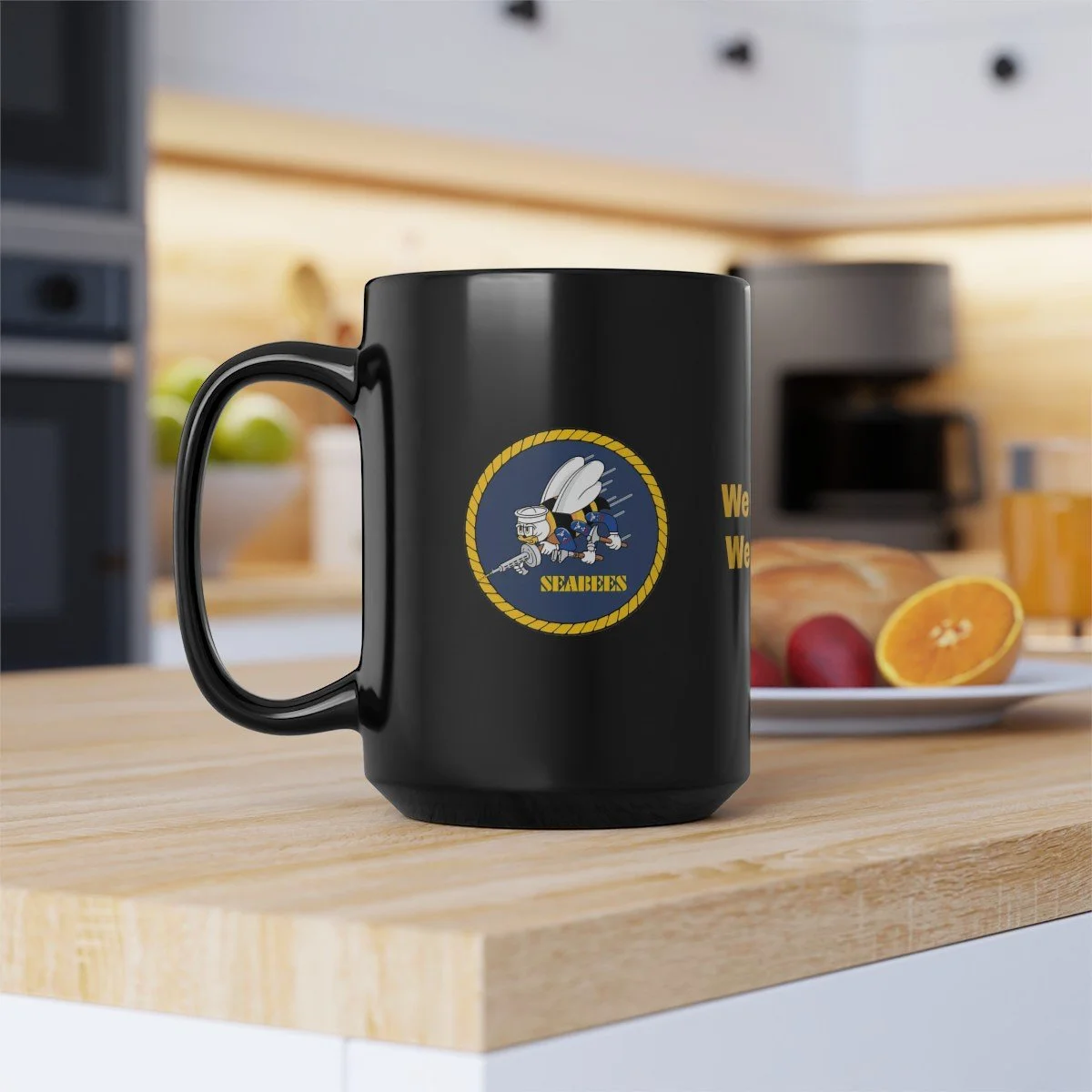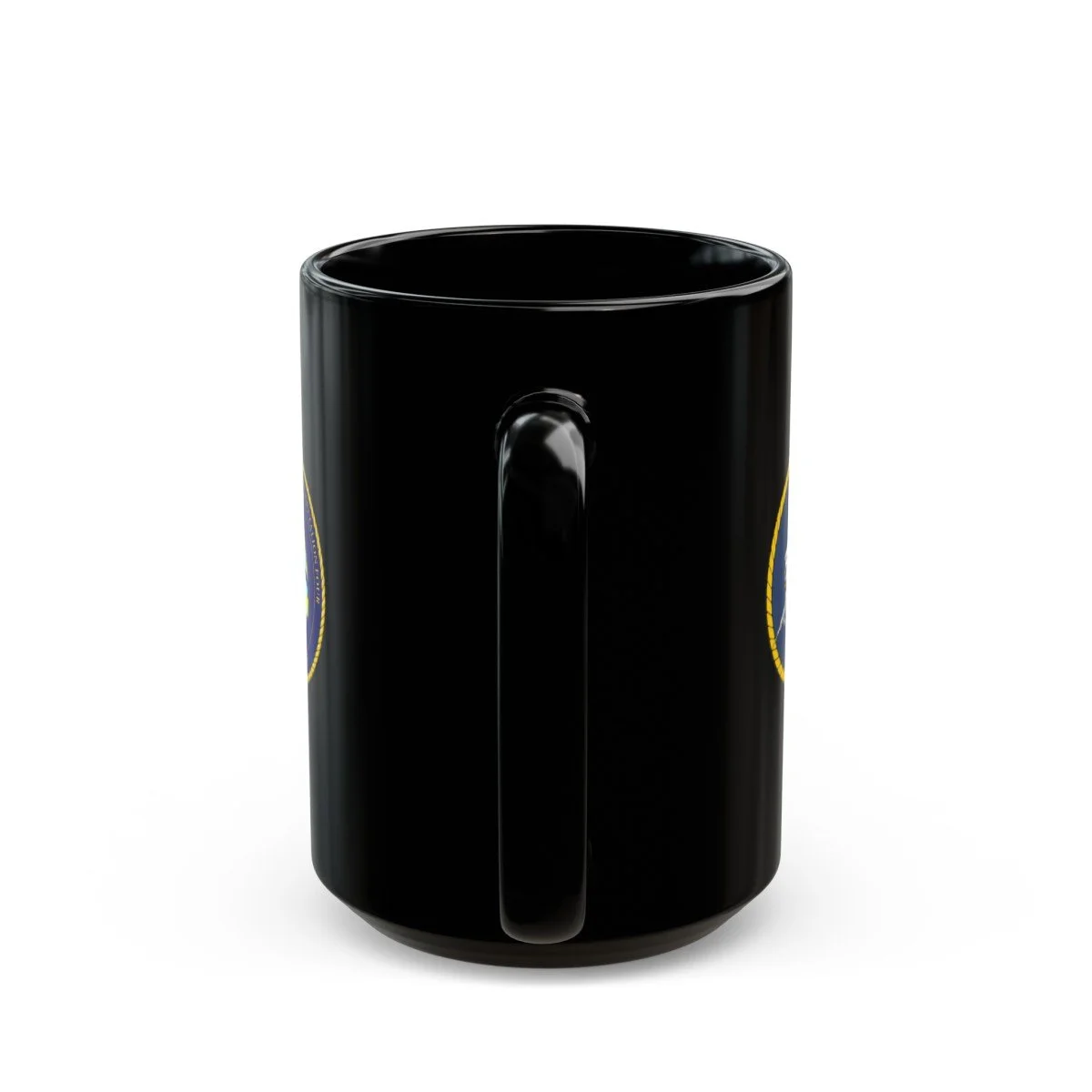 Image 1 of 4
Image 1 of 4

 Image 2 of 4
Image 2 of 4

 Image 3 of 4
Image 3 of 4

 Image 4 of 4
Image 4 of 4





Naval Mobile Construction Battalion Four (NMCB - 4) / Seabee Emblem / "We Fight, We Build" 15 oz Black Ceramic Coffee Mug
Sip your coffee proudly from your NMCB-4 Seabee 15 oz Mug. It’s BPA and lead-free, microwave and dishwasher-safe, and made of black durable ceramic. .
Material: 100% ceramic with a glossy finish .
15oz .: C-shaped easy-grip handle .
Microwave and dishwasher safe .
Lead and BPA-free
NMCB-4 History
The 4th U.S. Naval Construction Battalion (4th NCB) was commissioned on May 11, 1942, starting its WWII efforts with the construction of advanced bases in Alaska and the Aleutian Islands. By 1943, it had expanded its operations to Guam and, later, Okinawa and Korea, focusing on building essential military infrastructure. Post-WWII, the battalion was decommissioned but reactivated in 1951 as Naval Mobile Construction Battalion FOUR (NMCB FOUR) in Norfolk, Virginia, later making its permanent home at Port Hueneme, California. Throughout the following decades, NMCB FOUR undertook a wide range of construction projects worldwide, including significant work during the Vietnam War, deployments to Diego Garcia, Guam, Hawaii, Japan, and disaster recovery efforts following Typhoon Tip and the eruption of Mount Pinatubo. NMCB FOUR's history is marked by rapid deployments and diverse construction projects that significantly contributed to U.S. military operations and disaster relief efforts. From fortifying the perimeter of Guantanamo Bay during the Cuban Missile Crisis to extensive operations in Vietnam, the battalion demonstrated versatility and a high operational tempo. In the 1970s, they provided humanitarian assistance to Vietnamese refugees and rebuilt barracks destroyed by natural disasters. The 1980s and 1990s saw the battalion extending its services to new territories, offering both military support and humanitarian aid, illustrating the battalion's adaptability and commitment to aiding both military personnel and civilians in times of need.
Sip your coffee proudly from your NMCB-4 Seabee 15 oz Mug. It’s BPA and lead-free, microwave and dishwasher-safe, and made of black durable ceramic. .
Material: 100% ceramic with a glossy finish .
15oz .: C-shaped easy-grip handle .
Microwave and dishwasher safe .
Lead and BPA-free
NMCB-4 History
The 4th U.S. Naval Construction Battalion (4th NCB) was commissioned on May 11, 1942, starting its WWII efforts with the construction of advanced bases in Alaska and the Aleutian Islands. By 1943, it had expanded its operations to Guam and, later, Okinawa and Korea, focusing on building essential military infrastructure. Post-WWII, the battalion was decommissioned but reactivated in 1951 as Naval Mobile Construction Battalion FOUR (NMCB FOUR) in Norfolk, Virginia, later making its permanent home at Port Hueneme, California. Throughout the following decades, NMCB FOUR undertook a wide range of construction projects worldwide, including significant work during the Vietnam War, deployments to Diego Garcia, Guam, Hawaii, Japan, and disaster recovery efforts following Typhoon Tip and the eruption of Mount Pinatubo. NMCB FOUR's history is marked by rapid deployments and diverse construction projects that significantly contributed to U.S. military operations and disaster relief efforts. From fortifying the perimeter of Guantanamo Bay during the Cuban Missile Crisis to extensive operations in Vietnam, the battalion demonstrated versatility and a high operational tempo. In the 1970s, they provided humanitarian assistance to Vietnamese refugees and rebuilt barracks destroyed by natural disasters. The 1980s and 1990s saw the battalion extending its services to new territories, offering both military support and humanitarian aid, illustrating the battalion's adaptability and commitment to aiding both military personnel and civilians in times of need.
